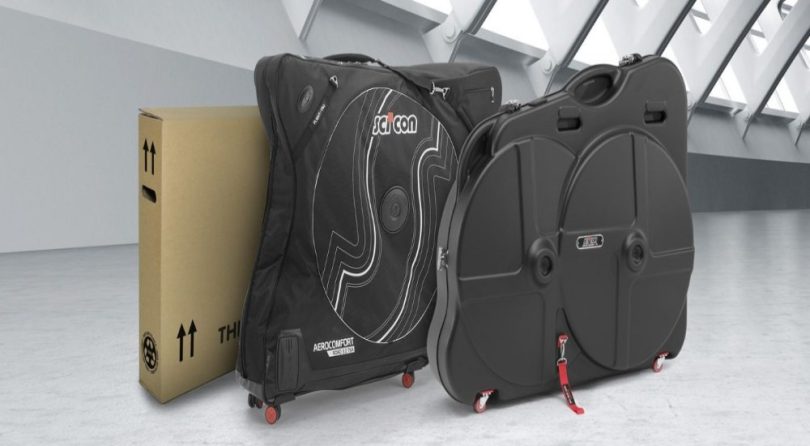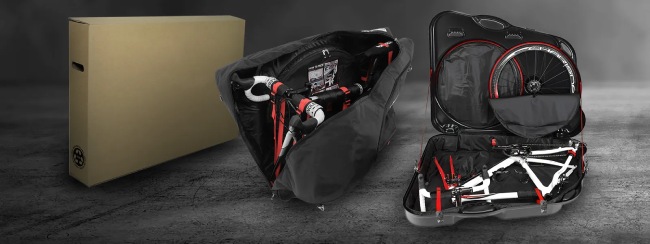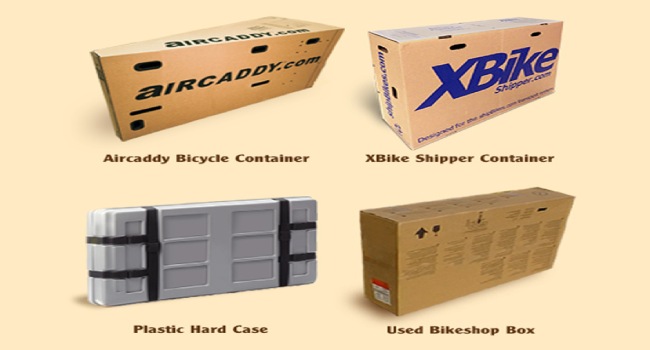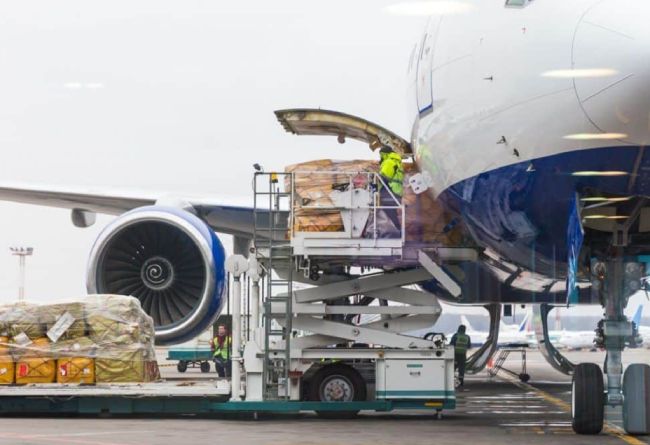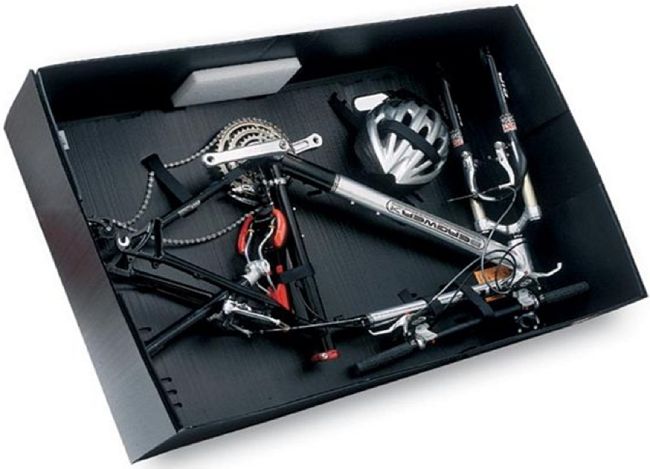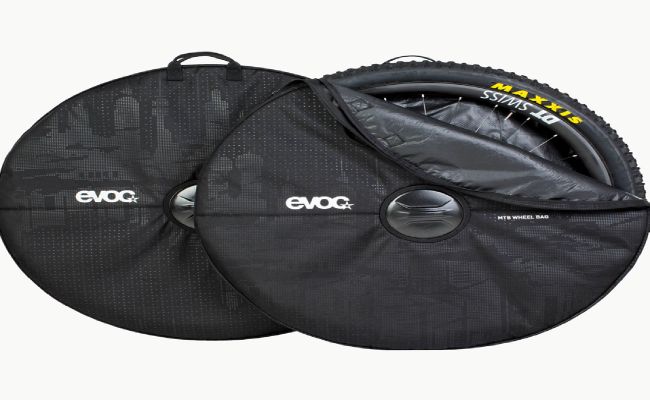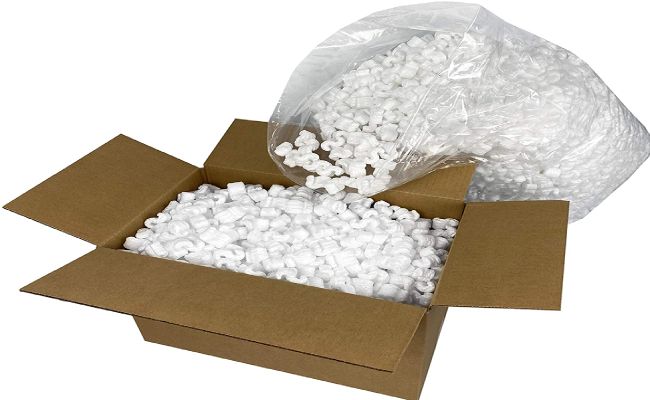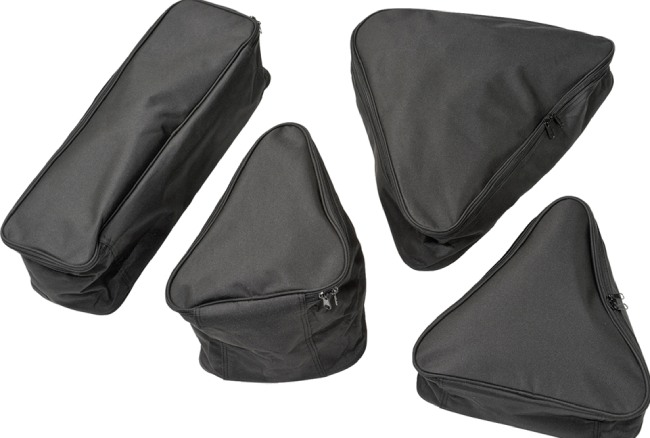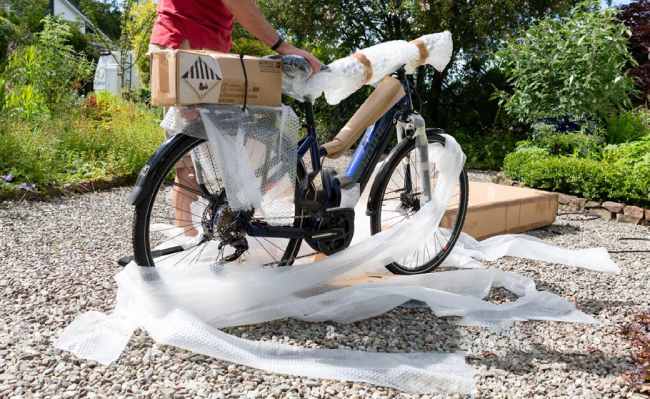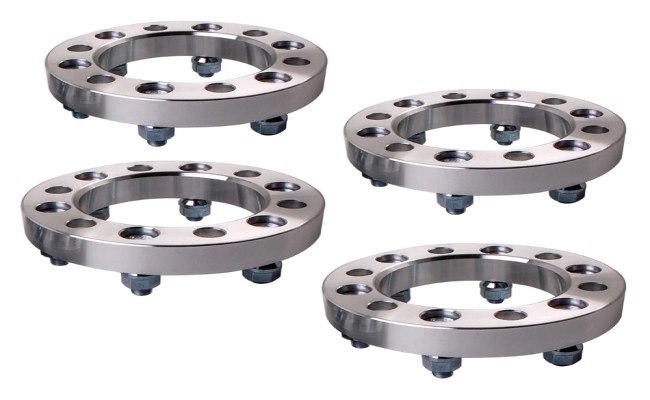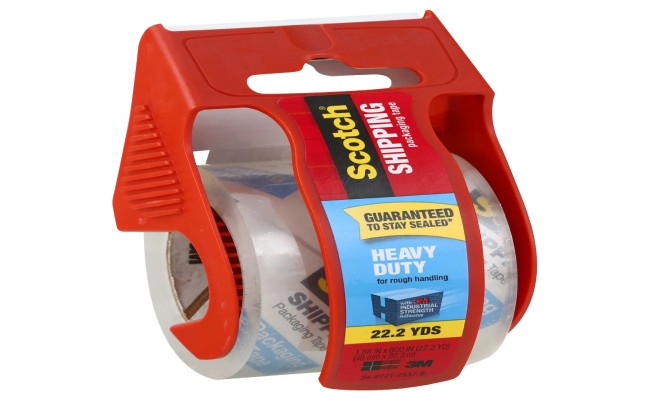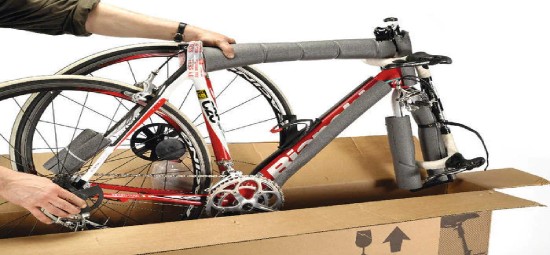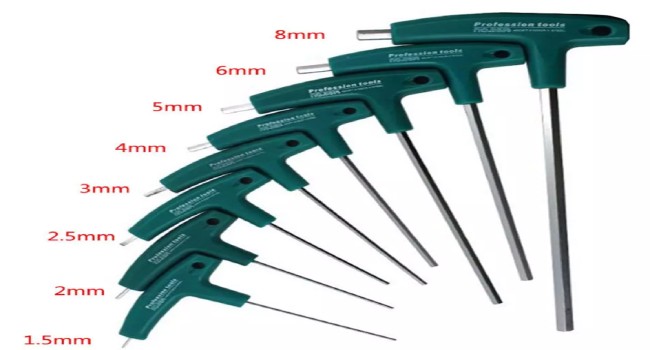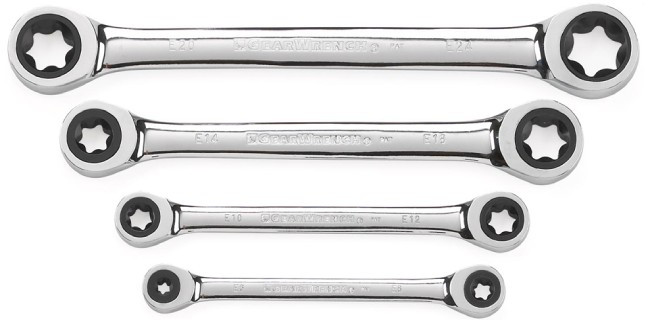The most regular size for bike boxes is 43”x 11”x 32”. The other two popular boxes are 53”x 29”x 9” and 54”x 28”x 8”.
Apart from these standard sizes; some irregular boxes can be smaller or larger than what we’ve included, depending on the shape, size, and specialty of the bike.
Bike box basics
Before you start shipping your bikes, it’s best to learn a bit about the packaging. Obviously, a bike box needs to be large enough to provide housing for a bicycle.
Bike boxes are similar to boxes you see with flat-screen TVs and are mostly rectangular. A great portion of them is made of cardboard and you can get them from almost any shipping company, including UPS and FedEx.
-
Cardboard box vs hard case vs bags
Cardboard box
Cardboard bike boxes are the most popular among businesses and they cost around $25 apiece. You can get them from shipping companies and bike shops.
Hard case box
When it comes to transporting your bikes by air, the hard case boxes come into play because many airlines will refuse to ship your bikes in cardboard boxes.
No doubt these plastic hard case boxes are elegant alternatives too. They can set you back $100 to $300.
Bike travel bag
There’s also a special kind of baggage you can get for your bike which will be accepted by most airlines in place of just one more piece of luggage.
How To Choose a Bike Box for Shipping?
On average, a bike weighs between 14 lbs and 9 lbs. In case you’re wondering how big a box should be for shipping, it needs to be at least 43x 11x 32 inches. This base size does not cross international shipping size limits.
We can’t recommend you a bike box bigger than 54”x 28”x 8” because you might be forbidden to ship your bike if you go any bigger.
Why do bike boxes differ in size?
Not all bikes are the same in dimensions. Even a 43”x 11”x 32” may seem enormous when we think of kids’ bikes. Most shippers mainly have mid-sized road and mountain bikes in mind as they sell their boxes.
The 3 wheeler recumbent bikes are the largest bicycles around, and you definitely need a little bigger size than regular types of boxes if you plan to ship one of these.
Pro Tip: Bike frames can be diverse and different in size, from XXS to XXL. Refer to your height to determine what size bike you need. For instance, you need a bike with a frame that’s 16” to 18” long if you’re between 5’6” and 6”.
What are the notes on bike boxes for airlines?
You might need to transport your bike on a plane in case you’re not able to ship it using services like UPS or FedEx, and you may want to learn about the bike box measurements for international airlines.
- Size
Normally, the permitted bike box sizes on most airlines are under 62 inches combining the length, height, and width. The box is regarded as luggage or baggage at the point it exceeds 62” even by a smidge, and you accordingly pay the high price.
- Weight
Many airlines do not transport bikes that are over 50 lbs. So, you need to find another way to ship the bikes when they’re on the heavier side.
Note: Some airlines might not allow cardboard boxes for bikes which makes it more difficult. Do not forget to talk to your specific airline before you do anything about the boxes.
What Do You Need to Pack the Bike for Shipping?
You need quite a few elements and a couple of tools to get the bikes ready for shipping safely; without the risk of damage.
1. Bike box
This is the main pack where you will put each part of the bike. It will house all the accessories, setup guides, and user manuals in it.
2. Wheel bags
Wheel bags will keep the spokes protected and give your packaging a valuable edge. They don’t cost much but make a great difference in customer satisfaction.
3. Packing peanuts/foam
You shouldn’t forget these fillers as they’ll make it easier for you to keep things tight and in place inside the bike box.
4. Accessory bag
Accessory bags are for nicer presentation and proper packaging. You can use them to keep small parts and particular attachments in one place.
5. Bubble wrap
Bubble wrapping will keep your bike safe from scratches and prints. It gives the bike a fresh and new element while packing or unboxing.
6. Axle spacers
Axle spacers have diverse uses and are available in all sorts of different materials. You can add 4-6 same size spacers in all the corners inside of the box to avoid tapping marks.
7. Disc brake spacers
Disc brake spacers are vital when packaging bikes. A few substitute pieces will make the recipients happy and appeased just when they need them.
8. Packing tape
Make sure you have loads of rolls standby before you jump into actual bike boxing action. A dedicated strip cutter will save you a lot of time and effort.
9. Foam tubing
You can use foam tubing as an alternative to bubble wraps. They may cost a bit more but make less mess and have a sturdy presence. Of course, you can use both at the same time.
10. Zip ties
Zip ties or cable ties will help as you attach foam tubing or bind the brakes and clutches with a handle. Make sure your bike is able to withstand all the intense movements.
11. Allen wrenches
You’ll need Allen wrenches to loosen or tighten the joints, unbinding the accessories, and work with other parts.
12. Torx wrenches
You can’t forget your Torx wrenches and proceed with packaging. They’ll make your most hard works seem effortless.
10 Steps to Get Your Bike Ready for Shipping
1. Begin with the pedals
You can take off the pedals with one of your wrenches. Move the left one clockwise to work with reverse threading and turn the right pedal counter-clockwise and put them in the accessory bag.
2. Take off the wheels
Use the brake calipers and carefully take the wheels off. For disc brake bikes, use the brake pad spacer to get them loosened.
3. Take off the disc rotors
You don’t need to do it if you don’t have a disc brake. Take the discs off the wheel one at a time and keep them in the accessory bag.
4. Take off the attachments
Get to the bottle cages and take off the accessories such as GPS trackers, fenders, frame bags, and mini pumps and store them in the accessory bag. Feel free to use another bag if one is not enough.
5. Place the handlebars
Track the position of handlebars with a marker. Mark the spot where handlebars will be reattached to help the bike’s recipient. Next, take them off by the stem.
Don’t try to remove the stem itself since the head tube might misplace the bearing compression.
6. Take off the seat post
Track the saddle height with a tape or marker for the recipient. Check if the seat collar is nice and tight to continue.
7. Take off the derailleur
Disassemble your bike’s derailleur and rightly place it in the box.
8. Use foam tubing
Cover the frame and the fork with foam tubing. The zip ties will keep the foam in place. Repeat the same for the handlebars, brake levers, derailleur, seat post, and shift levers.
9. Use plastic spacers
Use plastic spacers as the coverage for the fork and the frame after foam tubing. You can get the spacers online or make them yourself with PVC. Stick them to the rear dropouts and to the fork.
10. Check the accessory bag
Hand-check the bag. Look for the assembly tools, disc rotors, bottle cages, and pedals. Make sure you get them all in the bag before you carry on.
FAQs
Q. Will a bike box fit in my car?
Yes! Bike boxes should comfortably fit in most cars.
Q. How big is a bike box in inches?
A regular bike box can be up to 54″x 9″x 29″ in most cases. Airline carriers maintain certain regulations to ship bikes in boxes. Most carriers allow up to 62 inches combining length, height, and width
Q. Will a bike box fit in a Prius?
Yes! Most Prius offer plenty of space and you can easily fit a bike box in your Prius.
Q. How long does it take to box a bike?
About 3-4 hours. You may go through a variety of small tasks and have to deal with multiple tools to get a bike safely into boxes.
Q. What does a green bike box mean?
People call them “bike turn boxes” and you may see them at the intersections. They give the cyclists a safe place to change tracks without the need of crossing the looming vehicle traffic.
Q. What is the average Weight of a bike box
There are different sizes and types of bike boxes as the bike sizes vary with models and types. For cardboard boxes, the average weight is around 2kg (4lbs) without the bike and 23kg (50lbs) with the bike in it.
Q. How to Measure a Bike
Take a tape measure and simply measure the length, width, and height of your bike.
Q. What is the cheapest way to ship a bike?
As USPS has international clearances, it is the cheapest shipping way for a bike. Other private shipping companies are a little bit expensive as they will charge additional fees to ship bikes.
Be sure to stick a correct shipping label before you send the bike and get a notification when the shipment is received.
Q. Can you ship a bike without taking it apart?
Yes, you can ship a bike without dismantling it part by part by just wrapping it with bubble wrap. But you should use this technique only when transporting for a short distance.
It is always best to ship your bike in a bike box to avoid any damage on the way.

